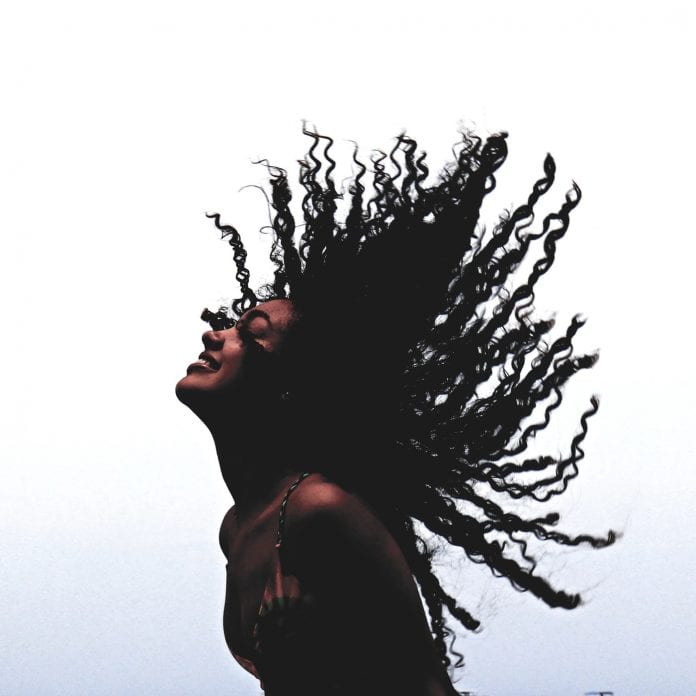Naturally curly and wavy hair is appearing more and more in the media (as it should do) – textured styles on the heads of celebrities, elaborate curls seen in film and on TV. Embracing your natural hair is thankfully finally in fashion.
However, with this new spotlight comes a host of misinformation. Taking care of natural curls and waves can be a mystery to most people, whether you’ve straightened your locks for years, or simply never had the time to research. With the popularisation of strict hair regimes such as the Curly Girl Method (or CGM), it’s easy to be led astray.
I scoured the internet for more information and spoke to several members of the subreddit r/curlyhair to get their take. Here are some of the top pitfalls to avoid.
Silicones and sulphates will destroy your hair
Okay, so that might be dramatic but this core ‘rule’ of CGM has seeped into haircare across the internet. Silicones, found in conditioner, coat the hair and cover up damage, making locks luscious. As they build-up, the most efficient and common way to remove them is by using sulphate shampoo. However, sulphates strip natural oils away too, causing dryness, frizz and – you guessed it – more damage. Thus, the proposition that you should never ever use them.
Popular curly haircare YouTuber Manes By Mell debunks this: “Sulphates can be damaging to your hair. But they can also have great benefits,” she says, explaining that without cleansing sulphates, sebum quickly builds up on the scalp. “Buildup on the scalp will lead to a lot of itchiness, you’ll get a lot of flakes, and over time this can lead to hair loss because you’re clogging the pores of your scalp.” Reddit user Kate, 25, tells me: “I’ve been using a sulphate shampoo for a few months now and my scalp has never felt better.”
Similarly, Mell notes, silicones aren’t inherently bad for hair; water insoluble silicones do build up on the hair shaft and remain difficult to remove, whereas their water-soluble counterparts are easily shifted with water alone.
You must use specific haircare products (and lots of them)
With a host of new products for curly hair advertised every day, it’s a competitive market. Thus, the more sold, the better. Perhaps this is why a common misconception (one that’s also pushed by haircare brands) is that layering products is the best method.
However, finer, lighter curly hair typically can’t hold a great deal of product without looking greasy and lank – I say this from personal experience. Haleigh, 21, admits: “Every guide I’ve ever read has always said ‘When you think you’ve added enough gel, add more!’ My super fine, low-density hair can’t handle much product without looking horrible.” On the other hand, thicker hair can hold more product, but still shouldn’t be subjected to buildup. It’s more beneficial to begin with light products, and add more if your hair still doesn’t seem happy.
You can only brush your hair when it’s wet – or, that you shouldn’t brush it at all
Sure, maybe you don’t need to do a hundred brush strokes a night. For wavy and curly hairy, though, leaving hair tangled and knotted can easily encourage mats to build up (this is completely different to the formation of locs, however). If the hair is eventually untangled, much will be lost due to damage, and in some cases, the hair cannot be detangled and must be cut off. It’s just not worth it to forgo a few minutes of detangling.
You only have curly hair if you don’t have to scrunch it
As the Tiktok sound says, ‘If your hair is not curly while wet… you don’t have curly hair.’
However, that’s easily proven wrong. When wet, each curl becomes elongated and weighed down by water density. Thus, the curl or wave pattern is hidden. This is why shrinkage happens, where curly hair often looks shorter when dry.
And finally: you must follow the Curly Girl Method.
Overall, it’s clear that the Curly Girl Method isn’t all it’s made out to be. As Redditor Ellie, 32, tells me: “I think it’s a really great starting point for learning how to take care of curly hair, but that’s it’s not the end-all-be-all of curly hair care. And this is coming from someone who also fell into the trap of being obsessed with doing everything right at one point, myself.”
Shivani, 26, adds: “I think in the interest of making things simple, curly hair advice is too one-size-fits-all. The truth is it takes a lot of trial and error to find what works for your hair.”
Words by Fern McErlane
Love Lifestyle? Read more here.
Support The Indiependent
We’re trying to raise £200 a month to help cover our operational costs. This includes our ‘Writer of the Month’ awards, where we recognise the amazing work produced by our contributor team. If you’ve enjoyed reading our site, we’d really appreciate it if you could donate to The Indiependent. Whether you can give £1 or £10, you’d be making a huge difference to our small team.
